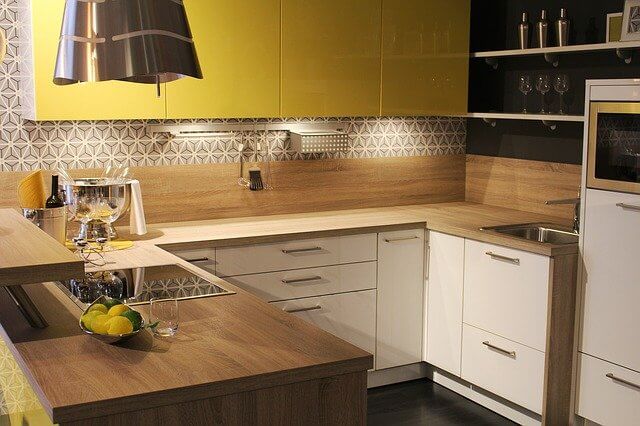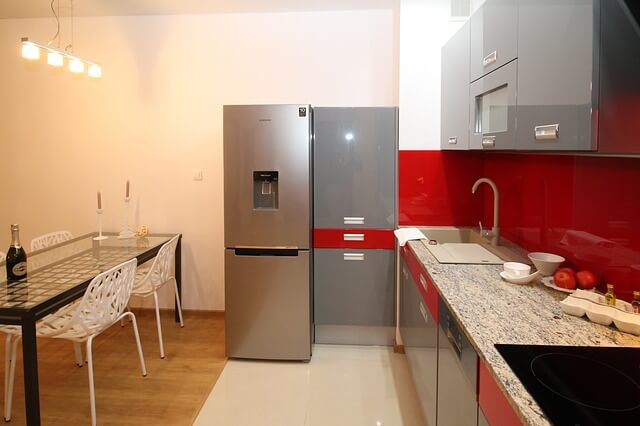6 Features of a Functional Kitchen
A functional kitchen is one that functions well. This means it satisfies the needs of everyone in your home while prioritizing those who use it most often. It can also be a place where the whole family enjoys hanging out and spending time together, even if they’re not using the kitchen for cooking or eating.
One of the most trendy phrases in interior design today is “smart kitchen.” The term refers to a modern kitchen that is functional and easy to useퟀ�a kitchen featuring ergonomic design, equipped with smart appliances and easy-to-clean materials. While this might sound like just another marketing gimmick or product feature (there are so many!), a truly smart kitchen has certain features which make full use of space, emphasize convenience, and help save money on your utility bills. If you’re thinking of installing a new kitchen as part of an upcoming home renovation, then here’s our guide to identifying features that will truly make your kitchen smart.
In your contemporary Smart Kitchen, there should be some kind of sit-down eating area. This space should be visually and physically separated from the rest of the kitchen so that you can use it for reading recipes or simply relaxing while cooking. The idea is to make food preparation a calmer activity, rather than an all-out chore! It’s also worth considering going with a foldable table/chairs unit if there isn’t enough floor space in this seating area. The following are 6 Features of a Functional Kitchen:
1.) A fire-rated, walk-in pantry
The dry foods section of any refrigerator will lose some efficiency as temperature rises and falls with each opening and closing door. An all-electric home uses less than half its maximum amount of energy while keeping an average interior temperature in the mid-60s F (18 C). By contrast, maintaining a 70 F (21 C) interior temperature in a gas or oil-fired home uses more than twice as much energy. Keeping foods cool and fresh for longer periods of time requires less energy than shorter storage times, so any food that can be stored in a walk-in pantry will keep your home cooler and use less power.
2.) A composting system
The only real recycling you might do is recycling glass bottles and aluminum cans. This still doesn’t save resources since the bottles require energy to make them again, while the aluminum has to be mined out of the ground before it can be recycled. The best way to avoid adding to the waste stream is by removing items from it altogether. Composting takes rotting organic matter and turns it into usable material without adding to the strain on limited resources like water. A composting system will also save time and money by negating the need to have a trash service pick up your household waste.
3.) A solarium
Most people don’t go outside very often, but they still want access to natural light. A glass-covered porch or room with lots of windows can be great for this purpose. They are comfortable rooms with good views of any outside scenery from inside the home, even if you have trees or other obstructions blocking your view directly from your kitchen window. This is an important feature in any home that has easy access to sunlight throughout most of the day. Being able to get plenty of natural sunlight helps reduce depression even if you never directly use the sun to help power your appliances.
4.) Energy-efficient lighting
Lighting is necessary for seeing things in the dark. It’s also a major source of electricity usage and costs thousands of dollars per year to operate. By making sure every light switch has LED bulbs, you’ll reduce your utility bill while avoiding incandescent bulbs that add more heat than light anyway. This can be done with smart-bulbs that are controlled by smartphone apps, but they usually require additional hardware like a hub to connect to your network. Computerized system management will let you easily turn off lights when not in use, so adding timers and sensors throughout the house will make sure these devices don’t waste energy whenever possible. On the other hand, having low-power sensors to automatically turn your lights on when you enter a room is convenient so that you don’t have to waste time fumbling for the right switch.
5.) A smart kitchen sink
Many of the water-saving features you find in bathrooms can be applied to kitchens as well. Installing aerators on all your faucets will reduce the amount of water needed for many tasks like washing dishes, clothes, and hands. Some sinks even have motion sensors built-in, so they only use the water whenever it’s being used, rather than wasting it while no one is looking. You should also aim to schedule most of your chores around times with the best sunlight, such as during mid-afternoon or early evening. You can even set up a system using sensors and lights to give you the option of turning off your faucets whenever you’re not actively using them for tasks that will take longer than a few minutes. This is an easy way of saving on water, electricity, and gas since there’s no need to keep your stove or oven running while you’re out doing chores.
6.) Composting
Compost keeps organic waste from being sent to landfills, where it releases harmful methane into the atmosphere as it breaks down. More than just keeping trash out of dumpsters, composting turns food scraps back into rich soil that can be used to grow crops instead. As long as you don’t mind the smell and having access to 5-gallon buckets with lots of holes in them, you can start your compost pile anywhere in the yard since it doesn’t require much space or even a proper lid. If you don’t have time to do this yourself, plenty of companies will come to pick up the waste and turn it into usable material for you.
These days, kitchens are increasingly being fitted as sleek open-plan spaces wherein only partial walls separate one room. While this concept allows for maximum visual connection between areas within your home, it also means that more attention needs to be paid to keeping these spaces pristinely clean�and clutter-free! A good way to cut your cleaning time in half is to install a folding table/cabinet system in your kitchen. This adds additional storage space, allowing you to keep extra pots or ingredients in easy reach�but neatly out of sight!


